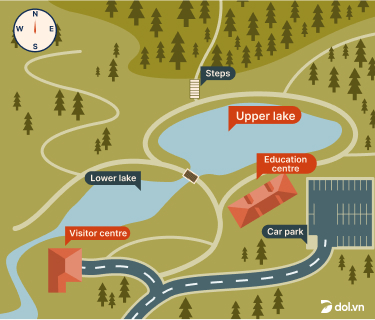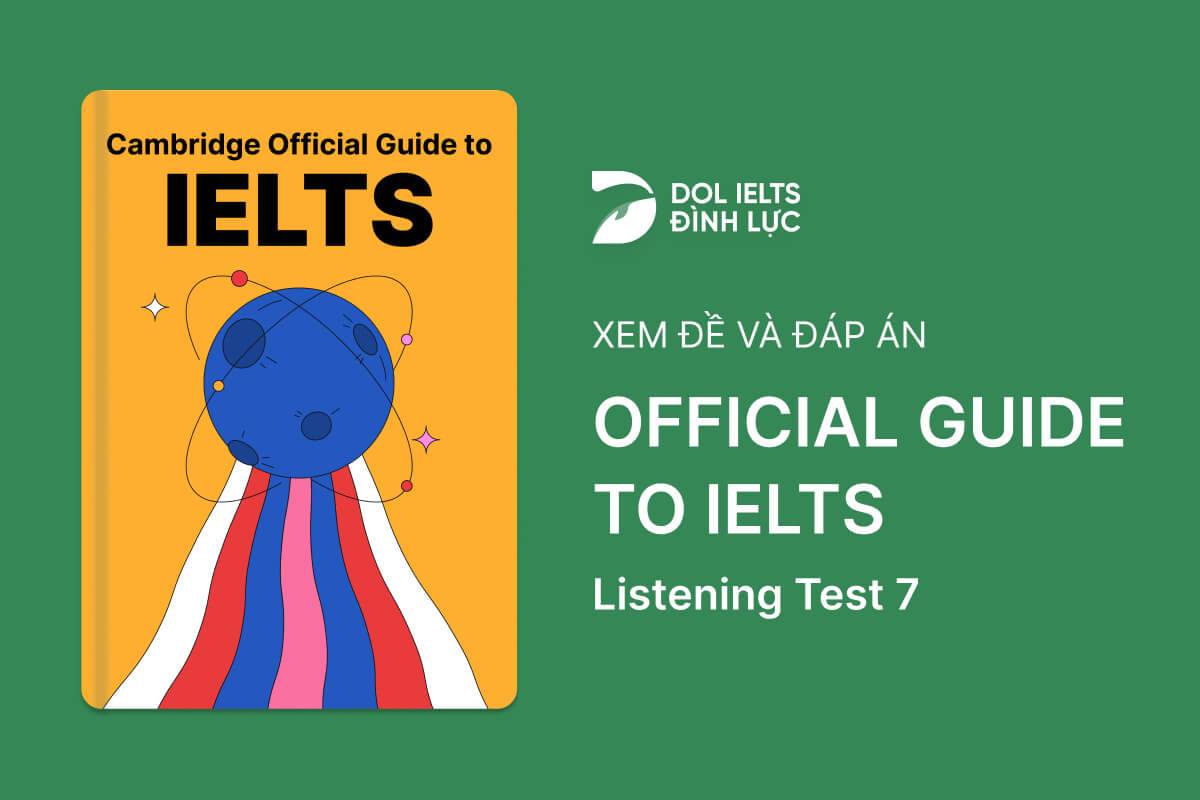Official Cambridge Guide To IELTS - Listening Test 7 With Practice Test, Answers And Explanation
Luyện tập đề IELTS Online Test Official Cambridge Guide To IELTS - Listening Test 7 được lấy từ cuốn sách Official Cambridge Guide To IELTS với trải nghiệm thi IELTS trên máy và giải thích đáp án chi tiết bằng Linearthinking, kèm answer key và list từ vựng IELTS cần học trong bài đọc.
Section
👂️ Bài nghe section 1
sheets are provided
can hire a
8
is included9
a shared
is available10
❓ Tapescript section 1
🔥 Đáp án & giải thích section 1
Giải thích chi tiết
 Mình cần nghe xem staff như thế nào (staff are .... )
Mình cần nghe xem staff như thế nào (staff are .... )
Đáp án sẽ tới sau "Are there any reviews on the website from people who've been there?" (đề cập tới reviews)
 Nghe tiếp có "They aren't all that good though. Some people said they didn't like the staff, they had an unfriendly attitude"
Nghe tiếp có "They aren't all that good though. Some people said they didn't like the staff, they had an unfriendly attitude"
=> Một số người không thích staff và nói rằng họ có thái độ unfriendly
=> Đáp án là unfriendly 
Section
👂️ Bài nghe section 2

❓ Tapescript section 2
🔥 Đáp án & giải thích section 2
Giải thích chi tiết
 Mình cần nghe xem khu vực Sculture Park trước đây là gì
Mình cần nghe xem khu vực Sculture Park trước đây là gì
Đáp án tới khi nghe "As you'll have noticed when you drove here, most of the land around the park is farmland" (đề cập tới khu đất)
 Sau đó nghe "They built a house in the centre of the park,... but this burnt down in 1980
Sau đó nghe "They built a house in the centre of the park,... but this burnt down in 1980
=> Họ (gia đình De Quincies) đã xây 1 ngôi nhà và nó đã bị cháy
=> Đáp án đúng là B 
Section
👂️ Bài nghe section 3
Give a brief overview including the
27
Link each problem to a
which explains it28
Practical solutions to problems
Include details such as participants,
and sequence29
Section is often poorly done because of lack of
30
Don’t use new material here
❓ Tapescript section 3
🔥 Đáp án & giải thích section 3
Giải thích chi tiết
Mình cần nghe xem tại sao Leo chọn instant coffee làm topic cho bài report của anh ấy
=> Đáp án sẽ tới khi nghe "I’m doing instant coffee."
 Sau đó Anna có hỏi tại sao không chọn clothing
Leo trả lời rằng đó là "first thought"- "but when I searched for men’s clothing on the Internet there were hardly any articles."
Sau đó Anna có hỏi tại sao không chọn clothing
Leo trả lời rằng đó là "first thought"- "but when I searched for men’s clothing on the Internet there were hardly any articles."
=> Khó tìm được bài viết nào
 Leo nói tiếp "then I looked for coffee and I found there were tons."
Leo nói tiếp "then I looked for coffee and I found there were tons."
=> Tìm coffee và ra rất nhiều tư liệu bài báo (tons=plenty)
=> Đáp án đúng là A 
Section
👂️ Bài nghe section 4
Fireworks were introduced from China.
Their use was mainly to do with:
war
(in plays and festivals)31
Various features of
were shown in fireworks displays.32
Scientists were interested in using ideas from fireworks displays:
to make human
possible33to show the formation of
34
London:
Scientists were distrustful at first
Later, they investigated
uses of fireworks (e.g. for sailors)35
St Petersburg:
Fireworks were seen as a method of
for people.36
Paris:
Displays emphasised the power of the
37Scientists aimed to provide
38
Italian fireworks specialists became influential.
Servadoni’s fireworks display followed the same pattern as an
.39
The appeal of fireworks extended to the middle classes.
Some displays demonstrated new scientific discoveries such as
.40
❓ Tapescript section 4
🔥 Đáp án & giải thích section 4
Giải thích chi tiết
 Mình cần nghe xem fireworks thường được sử dụng cho việc gì ngoài mục đích chiến tranh ((.... in plays and festivals))
Mình cần nghe xem fireworks thường được sử dụng cho việc gì ngoài mục đích chiến tranh ((.... in plays and festivals))
=> Đáp án sẽ tới sau "Up to the 16th century they were generally used for military purposes," (military = wars)
 Nghe thấy ".... but they were also sometimes a feature of plays and festivals where their chief purpose was related to religion. "
Nghe thấy ".... but they were also sometimes a feature of plays and festivals where their chief purpose was related to religion. "
=> Đặc điểm của plays and festivals, mục đích chính liên quan đến religion
=> Đáp án là religion 


